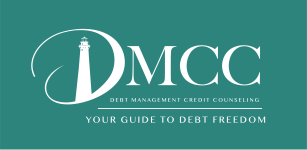Getting out of debt and staying out of debt is not easy. If you’ve already amassed a fair amount of debt and are thinking it will be impossible to ever get out from under it all, don’t despair, you can learn how to stop incurring new debt and take charge of your life.
The first thing you must do is STOP increasing your debt! If you have any credit cards that are maxed out, destroy them. The best way to manage your debt is to get spending under control by eliminating all of your credit cards, except one. Use your one credit card ONLY to buy “must haves” until you can get your finances in check.
Avoiding more debt starts with knowing what you are spending your money on. Record your spending. This is key to getting out of debt. You’re in debt because you spent money you didn’t have. If you’re like most people, your debt didn’t come from a single large purchase; it was trickles of spending amassed over time. Each day for at least one month, write down every penny you spend, no matter how small.
The next step is to categorize your spending. Put your monthly expenses into groups of “Must have,” “Should have,” and “Like to have.” “Must haves” are things that will cause harm if you don’t buy them, such as food, rent, medicine, pet food, etc. “Should haves” are things that you need, but can do without for a little while, e.g., new clothes for work, gym membership, etc. “Like to haves” are things that you don’t need, but enhance your life, e.g., magazine subscriptions, newspaper, cable tv, coffee with friends, etc. By doing this, you’ll have a good idea of what you spend your money on, and you’ll be able to figure out where you might need to cut back on spending. You don’t want to eliminate all of the “should haves” and the “like to haves,” but take a look at those first.
Now, make a budget based on your spending record. Looking at your new budget, you’re going to be able to see areas where you might be able to cut back. Chances are, your budget has some fat that can be trimmed. Be realistic, but vigilant. Over time you will be able to hold back on purchases and you will be able to come up with a dollar amount that can be put toward paying down your debt.
To begin paying off your debt, first figure out how much you owe, to whom, and on what terms. Debt can often feel overwhelming because you really don’t have a clear idea of how much in debt you really are. Gather your bills, and make a simple list of all the debts you have. Write down all the pertinent facts, including name of the creditor, your total balance, your minimum monthly payment, and your interest rate.
Prioritize your debts. Debts that are past due, ones where the creditors are hounding you, and those with exceedingly high interest rates should be considered top priorities. You should pay the minimum on your low interest rate debts, and apply the bulk of your available funds to the highest interest rate notes. Once you pay off one creditor, each debt gets easier to pay off than the last. Continue to pay off each debt in your priority list. You’ll refine your budget over time, increase the amount of money you can pay yourself, and the amount you can put toward debt.
Once things become more manageable, make sure you always pay more than the minimum required, otherwise it will take an extremely long time to eliminate your debt. For example, a single credit card with just a $1,000 balance and 19% interest will take about FIVE YEARS to pay off by making only the minimum payment of $26. Paying the minimum, you will spend $1556.40, with the Total Interest Paid: $556.40! Paying only the minimum payment will equate to giving them 55% more than you actually borrowed.
Don’t give up. You probably didn’t get into debt in a day, and you won’t get out of debt in a day. There are no quick fixes. Consider contacting a credit counseling agency to consolidate or settle your debts. Learning how to manage your money can bring great peace into your life, and will give you the freedom to spend your energy on other things.
DMCC is a 501 (c)3 nonprofit organization committed to educating consumers on financial issues and providing personal assistance to consumers who have become overextended with debt. Education is provided free of charge to consumers, as well as personal counseling to identify the best options for the repayment of their debt. To speak to a certified credit counselor, call toll-free 866-618-3328 or email contact@dmcconline.org.
